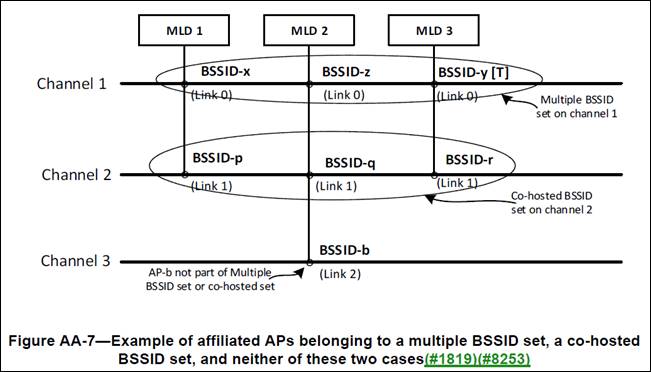Hi Abhi,
Â
Thank you for initiating the thread and your detailed description of various terminologies, much appreciated. While I certaintly understand the value of having a single SSID at the MLD level; the thing that is still not clear, to me, and I believe to many other folks, is why this has to be mandated. Requiring multiple MLDs to support mutliple SSIDs, while certainly doable, appears too complicated.
Â
During the call, Mike said he would be requesting agenda time for 21/209; it would be helpful to discuss this topic at the time rather than through emails. Mike, is that still the plan?
Â
Regards,
Rojan
Â
From: Abhishek Patil <appatil@xxxxxxxxxxxxxxxx>
Sent: Sunday, March 20, 2022 1:41 PM
To: STDS-802-11-TGBE@xxxxxxxxxxxxxxxxx
Subject: [STDS-802-11-TGBE] Discussion on SSID (CIDs 6725, 4036, 4919 and 6876)Â
Â
Hi Rojan, All,
Â
I am initiating this email thread to make progress on resolving CIDs 6725, 4036, 4919 and 6876
Â
As I explained during the call, the relationship between SSID, ESS & DS is as follows:
APs that are members of the same ESS advertise the same SSID. In addition, APs that are members of the same ESS are connected to the same DS. An AP MLD has a single interface to the DS (via the AP MLD), therefore, all APs affiliated with an AP MLD need to be members of the same ESS and are connected to the same DSS. As a result, all APs affiliated with the same AP MLD must have the same SSID.
Â
Please see the definitions of SSID, DS and ESS from baseline spec (REVme D1.0):
- SSID: A string used to identify the infrastructure basic service sets (BSSs) that comprise an extended service set (ESS), or to identify a non-infrastructure BSS
- DS: A system used to interconnect a set of basic service sets (BSSs) and integrated local area networks (LANs) to create an extended service set (ESS).
- ESS: A set of one or more basic service sets (BSSs) that are interconnected by a single distribution system (DS); an ESS appears as a single IEEE Std 802â?¢ access domain to the logical link control (LLC) sublayer.
Â
Furthermore, SSID is an input to perform authentication and in an ML setup, authentication is performed at the MLD level not per-link. Therefore, all APs of the AP MLD need to have the same SSID.
Â
During the call, there was a question on allowance of more than one SSID on the same channel. This is allowed and is the same as the virtual AP concept done today (via multiple BSSID set or co-hosted BSSID set). There are a couple of examples shown in Annex AA. One of them is shown below:
Â
Â
In the above example:
- AP-x and AP-p advertise the same SSID (say IEEE Guest)
- AP-z, AP-q and AP-b advertise the same SSID (say IEEE Enterprise)
- AP-y and AP-r advertise the same SSID (say IEEE Lab)
- MLD-1, MLD-2 and MLD-3 co-exist and each are part of a different ESS (IEEE Guest, IEEE Enterprise and IEEE Lab respectively).
Â
Hope this helps!
Â
Regards,
AbhiÂ
To unsubscribe from the STDS-802-11-TGBE list, click the following link: https://listserv.ieee.org/cgi-bin/wa?SUBED1=STDS-802-11-TGBE&A=1
To unsubscribe from the STDS-802-11-TGBE list, click the following link: https://listserv.ieee.org/cgi-bin/wa?SUBED1=STDS-802-11-TGBE&A=1
